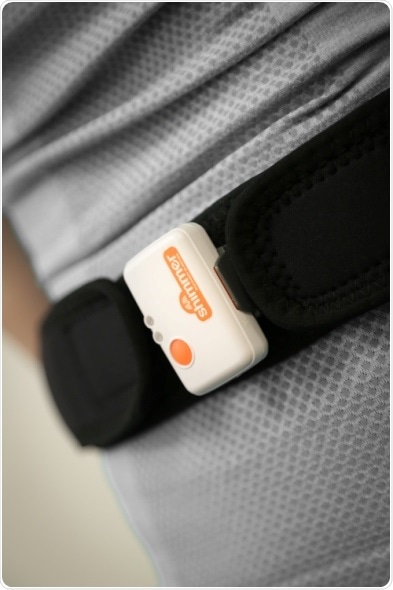Gait Research using Shimmer3 IMU
The way that people walk is generally a good indicator of their musculoskeletal health, and poor or uncoordinated mobility can result in falls and even injury. Gait research is frequently used as an indication of changes in a person’s mobility which could potentially lead to falls.

Over the past number of years, the team at Shimmer and our partners have been investigating the use of wearable sensors to measure and assess human gait parameters. This ground-breaking research involves comparing the quality of the gait metrics derived from measurements obtained from wearable sensors, with those measurements obtained from gold standard equipment. Shimmer’s research partners William Johnston, Brian Caulfield, Matthew Patterson and Niamh O’Mahony have recently published a new paper, entitled “Validation and Comparison of Shank and Lumbar-worn IMUs for Step Time Estimation” which determines and compares the validity of temporal gait metrics from two different mounting locations – the shank and lumbar spine, with those from a gold-standard force platform.
The research methods used consisted of controlled walking trials performed by subjects wearing Shimmer3 inertial measurement units (IMUs). 37 participants took part in the study, and each subject wore three time-synchronised IMUs - one mounted on the lumbar spine and one mounted on each distal shank. The subjects were instructed to walk along a 10m walkway at their own self-selected “normal” walking speed. The walkway featured a central force platform; however the subjects were not aware of the exact location of this. Data captured using the IMUs were used to estimate step times using previously published algorithms and were compared with the step times derived from the force platform.
The research findings show that there is a high level of correlation between the force platform and the lumbar and shank mounted IMUs, with the IMU located on the lumbar spine showing a slightly higher correlation with the force platform.
The findings could have significant and positive implications for future gait and mobility research. This type of research is often restricted by space, and requires bulky and often costly equipment. However these obstacles can be more easily overcome if inertial sensors can be proven to be as effective as the current gold standard equipment for measuring gait parameters.
There are several suggested advantages to using sensors for obtaining these measurements…
- Wearable sensors are small and unobtrusive and as the research shows that both the shank and the lumbar spine result in highly accurate data, either location can be used based on requirements and/or preference of the researcher and subject.
- The use of wearable sensors allows for gait research to be undertaken outside of the traditional biomechanical laboratory environment.
- Wearable sensors typically come at a significantly lower price than traditional gait analysis equipment, such as force plates and motion capture camera systems, reducing the cost of obtaining valid and accurate measurements.
The featured article investigates the accuracy of wearable inertial sensors for deriving gait metrics when compared to gold standard force plates, with the findings showing positive correlation between the data from both.